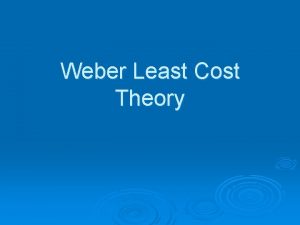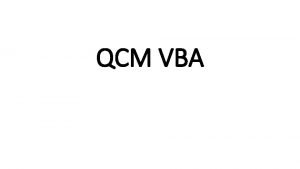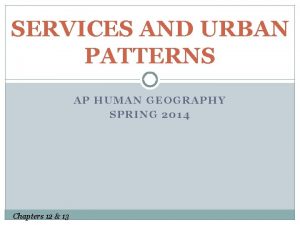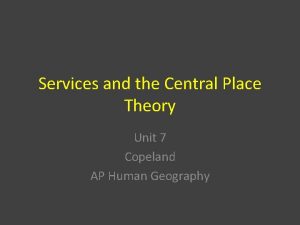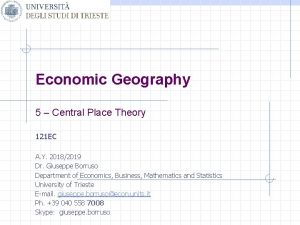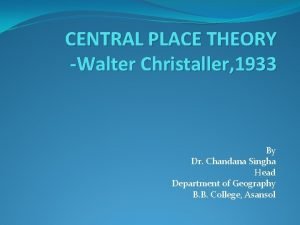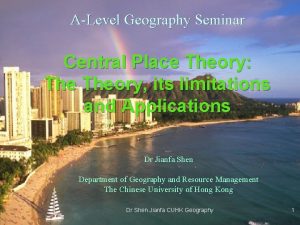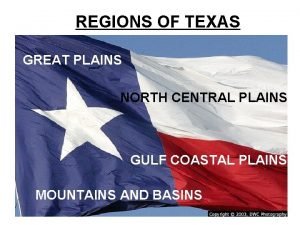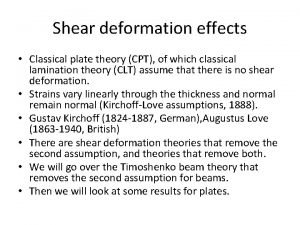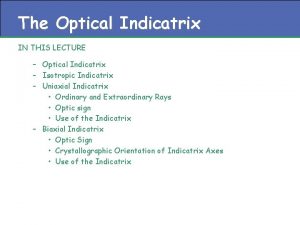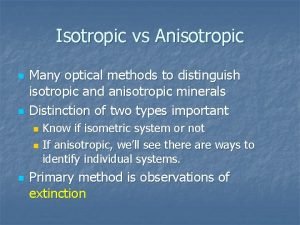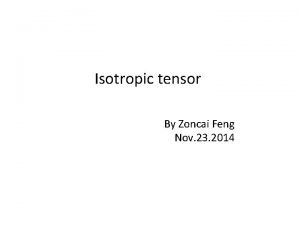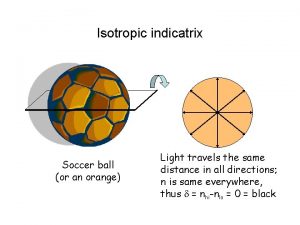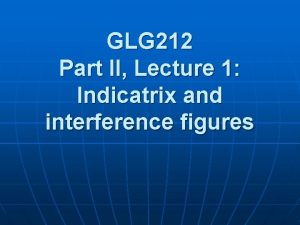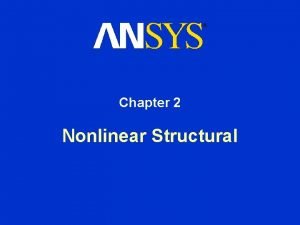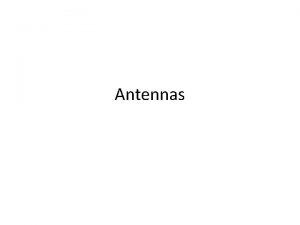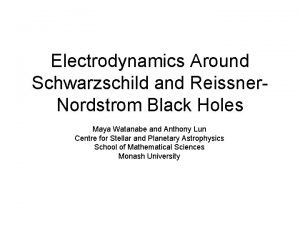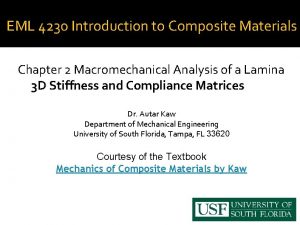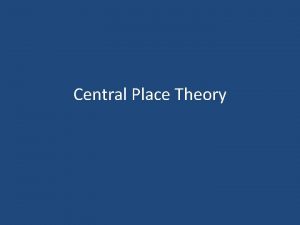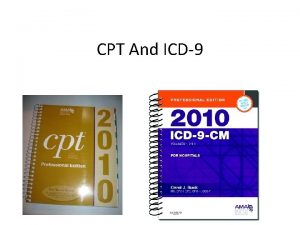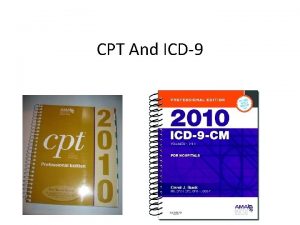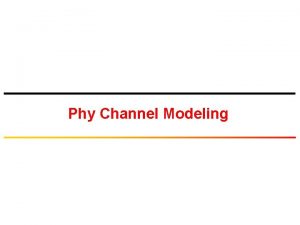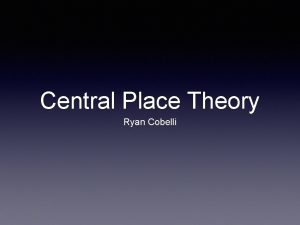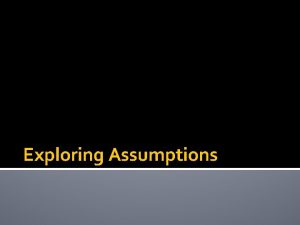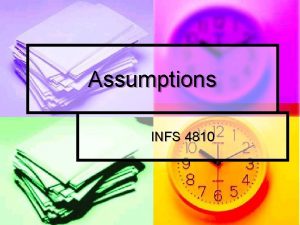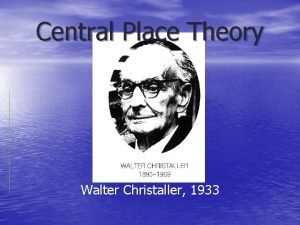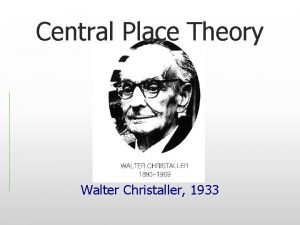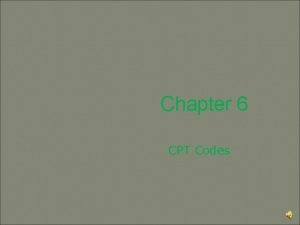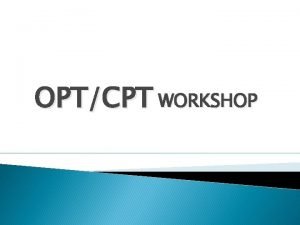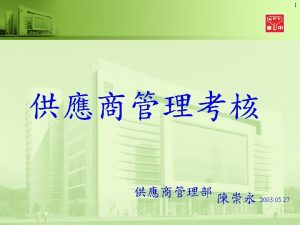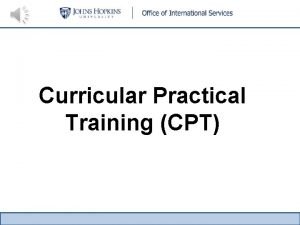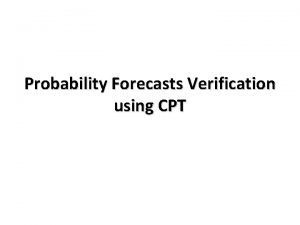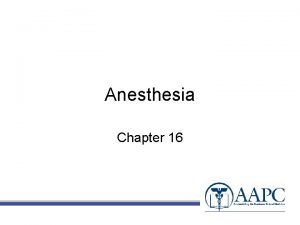1 Central Place Theory CPT Assumptions Isotropic plain
























- Slides: 24

1 Central Place Theory (CPT) Assumptions • ►Isotropic plain • ►Transportation costs are a linear function of distance • ►Population is evenly distributed • ► Rational behaviour • ►Consumers have identical preferences • ►Market characterized by free entry (i. e. perfectly competitive)

- CENTRAL PLACE: settlement that provides goods & services. - SPHERE OF INFLUENCE: surrounding the CP, area that falls under the economic, social, political influence (hinterland). - FUNCTIONAL HIERARCHIES: generalizations regarding spacing, size and function of settlements. - HIGH/LOW ORDER SETTLEMENTS, low order settlements provide simple, basic services (grocery stores, etc) high order settlements have specialized services (universities, concert halls)

3 Important definitions: • Threshold: • minimum DEMAND (volume of sales) needed for a business to stay in operation (and make a “normal” profit). • Range: • maximum distance over which a good can be sold from point P (i. e. where real price is low enough that people will travel to market to buy it)

4 Spatial Demand Cone Increasing real price Market location RANGE: The spatial extent of demand before demand drops to zero

5 Demand = zero

6 Implications of the RANGE Area of Extra Profit Min area required to stay in business (normal profits) Isotropic surface R M T ? Unmet demand for same good or service

7 Implication of RANGE: • room for more than one producer of same good / service • where would producer locate? • > 2*R • avoiding overlap

8 Implications of the RANGE R M Homogeneous plain 2 R distance T R M T ? Unmet demand for same good or service

R R 9 T T M M R T T M R ? T T M Unmet demand for M same good or R service R T T M R M M R T T M M M

10 How can problem of interstitial areas of unmet demand be solved?

Interstitial areas of unmet demand disappear if R markets are moved closer together M R R T M M R T M M R T T R T M R R T T M T R M R R M T M R T 11

How will market area boundaries form given the R ellipses formed by overlapping market areas? M R R T M M R T Overlapping Trade M Areas • Unfilled demand T now served R • Competition T M R R T T M T R M R R M T M R T 12

A system of hexagonal market areas fills the plain so that every consumer is served and no market areas overlap Homogeneous plain No Overlapping Trade Areas • Unfilled demand now served • No competition • Every producer making “normal profit” 13

Further economic / spatial complications: • T and R are good- or service-specific • Separate demand curves / cones for each good or service • Why? • Different levels of demand • Different sensitivity to distance etc. 14

15 Q Demanded Good / service A Good / service B Good / service C Distance

16 Q Demanded Good / service A Good / service B Good / service C Distance Range A Range B Range C

Q Demanded 17 Good / service A Good / service B Good / service C Distance Range A Range B Range C

18

19

20 Orders of Goods / Services • lower order goods • small T & R • (high frequency, low cost) • higher order goods • large T & R • (low frequency, high cost goods) • i. e. different “geographies” for different goods / services

A GENERAL GRAPH CONCERNING FUNCTIONS !

Or: Why doesn’t this always work? Christaller’s Follies - Large areas of flat land rarely exist Transport has changed since his day People/wealth are not evenly distributed Folks don’t always choose the central place! Purchasing power/needs not all the same Governments have control over location of industry/towns - Perfect competition = unreal - Places don’t stay the same forever - Does not fit industrial areas There are, however, some near perfect examples of of There however, some near perfect examples Christaller’s theory to be in the Canadian prairies andand Christaller’s theory to found be found in the Canadian prairies the Netherlands.

23 Central Place Theory: Recap • Tertiary activities: the city as a commercial centre… • …within a hierarchical system • Umlands • Simplifying assumptions • Spatial organization

24 Central Place Theory • A way of thinking about hierarchies • Urban centres • Urban functions • Market areas • A starting point for theorizing about space and spatial dynamics • The basis for retail and trade area studies for planning urban commercial functions and macromarketing
 What is central place theory in human geography
What is central place theory in human geography Weber's least cost theory
Weber's least cost theory Vba
Vba Gewandorf
Gewandorf Central place theory
Central place theory Central place theory
Central place theory Christaller central place theory
Christaller central place theory Christaller’s central place theory
Christaller’s central place theory University of hong kong
University of hong kong Great plains texas
Great plains texas Positive identification example
Positive identification example Trainuivlo cpt
Trainuivlo cpt Effective isotropic radiated power
Effective isotropic radiated power Isotropic material
Isotropic material Biaxial indicatrix
Biaxial indicatrix Isotropic vs anisotropic
Isotropic vs anisotropic Isotropic tensor example
Isotropic tensor example Isotropic indicatrix
Isotropic indicatrix Obtuse bisectrix figure
Obtuse bisectrix figure Oxide etcher
Oxide etcher Effective isotropic radiated power
Effective isotropic radiated power Ansys newton raphson
Ansys newton raphson Balun is a device
Balun is a device Reissner nordstrom metric
Reissner nordstrom metric Monoclinic material stiffness matrix
Monoclinic material stiffness matrix

